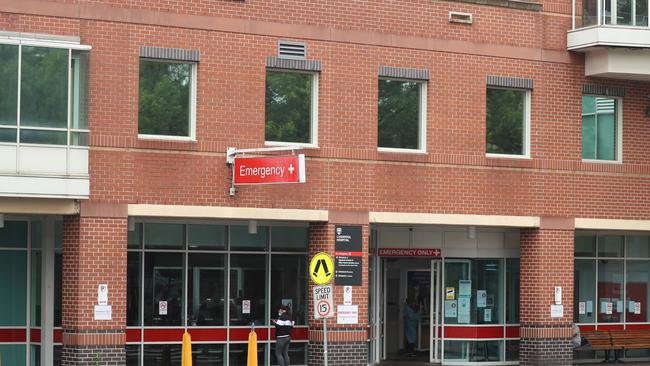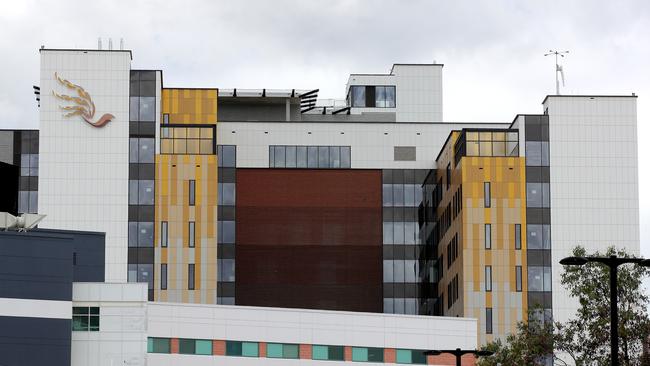Campbelltown, Liverpool and Bankstown-Lidcombe’s rates of seclusion, restraint: BHI report
A union representative says the “biggest problem” for south western Sydney when it comes to reducing seclusion and restraint events is the lack of acute beds.
Macarthur
Don't miss out on the headlines from Macarthur. Followed categories will be added to My News.
New data reveals patients in one southwest Sydney acute mental health unit were put in seclusion for an average of more than 19 hours.
Independent data from the Bureau of Health Information (BHI) shows a dramatic rise in the average time of seclusion events at Liverpool Hospital from October to December 2021 compared to the same quarter in 2020.
The death of Miriam Merten in Lismore was the catalyst for an independent review into the use of seclusion and restraint in NSW Health facilities.
The NSW Health KPI target for seclusion duration in 2020–21 was less than four hours for each hospital.

However, Liverpool Hospital recorded an average of 19 hours and 28 minutes, which had increased more than 13 hours from the same quarter in 2020.
According to the BHI, a seclusion event occurs when a patient is placed alone in a room or an area at any time of day or night, with no freedom of exit.
A restraint event occurs when the patient‘s freedom of movement is restricted by physical means, such as the hands-on immobilisation by health care staff; or mechanical means through application of devices.
CHALLENGES FOR STAFF
Erin Francis, an organiser with the NSW Nurses and Midwives’ Association said the “biggest problem” for South Western Sydney when it comes to reducing seclusion and restraint events is the lack of acute beds.
“With such few high acuity beds, it puts such a pressure down the line on areas that should be more subacute,” she said.
“I think that when you‘ve got so many significantly unwell consumers in an area, that’s probably why you’re seeing those high levels of seclusion and restraint.”
Ms Francis said while it’s great the Campbelltown Hospital Redevelopment will introduce more beds, it won’t ease the pressure on other hospitals in the region right away.
“ They aren't funding those additional beds straight away, so it’s a question of when will those beds be funded so that service can be provided,” she said.
“It’s uncertain when that funding is going to happen and how many beds will be opened at a time.
“But you really need to make sure that when we open beds, that the staffing is provided and safe staffing at that.”
Ms Francis said the pandemic had posed even more challenges for staff in helping patients.
“During the pandemic, there has been restrictions on visitation from family and friends,” she said.
“That’s been very hard when you’ve got somebody that’s detained in a unit for a significant amount of time and that’s caused some tension.
“For those that are granted time out to refresh throughout the day out of the unit, that’s not been allowed and that’s, I think, caused a bit of a barrier between staff and consumers.”
Ms Francis said the necessity of wearing personal protective equipment has also made staff and patient interactions more complex.
“In mental health, it‘s really important that you build that rapport rather quickly so that you can have that therapeutic relationship with your patient,” she said.
“But when you’re completely gowned up and masked up that’s another barrier to that.”
SECLUSION AND RESTRAINT A “LAST RESORT
The South Western Sydney Local Health District said it was committed to providing the best possible mental health care and treatment in the least restrictive environment.
“This means seclusion and/or restraint should only be used as a last resort to keep both consumers and staff safe,” a spokesperson said.
“Eliminating restrictive practises is a significant challenge requiring constant vigilance and effort, particularly when caring for consumers whose illness results in complex behaviours requiring comprehensive, close management.
“It is a goal we are committed to achieving.”
The spokesperson said the impacts of Covid-19 delayed the transfer for some consumers needing a higher level of care.
“This affected seclusion rates and frequency and duration of seclusion at Liverpool hospital,” the spokesperson said.

The spokesperson said the SWSLHD has multiple strategies to help reduce seclusion rates.
“Seclusion events are identified daily at the morning nursing management huddle and are reviewed to determine if follow up action is required to prevent recurrence,” they said.
“Nursing staff work closely with specialist staff to develop behaviour management plans for consumers with high needs and associated complex behaviours.
“Mental health staff are taking part in duress simulation exercises to improve their de-escalation skills.”
The spokesperson said they have also introduced the use of reflective practice (clinical reasoning) to evaluate and improve care by allowing staff to be more present for their patients and more able to respond effectively to individual needs.
Staff are also undertaking sensory modulation training to gain an understanding of trauma and strategies to implement a trauma informed response and apply sensory approaches that support consumers’ self-regulation and recovery without the use of restrictive practices.
“Regular ‘Toward Therapeutic Practice Meetings’ have been scheduled with Nurse Unit Managers, Clinical Nurse Consultants and nursing staff to discuss how to improve therapeutic engagement and restrictive practices at each site to reduce the use of seclusion and restraint,” the spokesperson said.
According to 2021 data collected by Bureau of Health Information, 95.8 per cent episodes of care in NSW Health’s acute mental health units did not involve physical restraint.
The 2021 data found the average duration for restraint was three minutes – down from five minutes when compared with 2020.
“Since 2019 to date, 86 projects across NSW Health facilities have improved therapeutic environments for consumers and carers, including sensory spaces, and dedicated rooms and gardens that are calming and safe for patients,” a NSW Health spokesperson said.
“These spaces can support a person to de-escalate their emotions and behaviour, and support recovery.
“The use of sensory rooms can assist to prevent the need for seclusion and restraint.”
During cross-examiantion Mr Buchen asked




